Laying the Groundwork at Grand Falls.
At some point in the not so distant future the people of central Newfoundland may have the opportunity to view something that has not been seen by any living person. That would be a view of the Exploits River unobstructed by the pulp and paper mill. Not that many more than a handful of people ever saw it anyway, but this is the story of some of those select few that arrived at this point in the forest and laid the groundwork which the region was built.
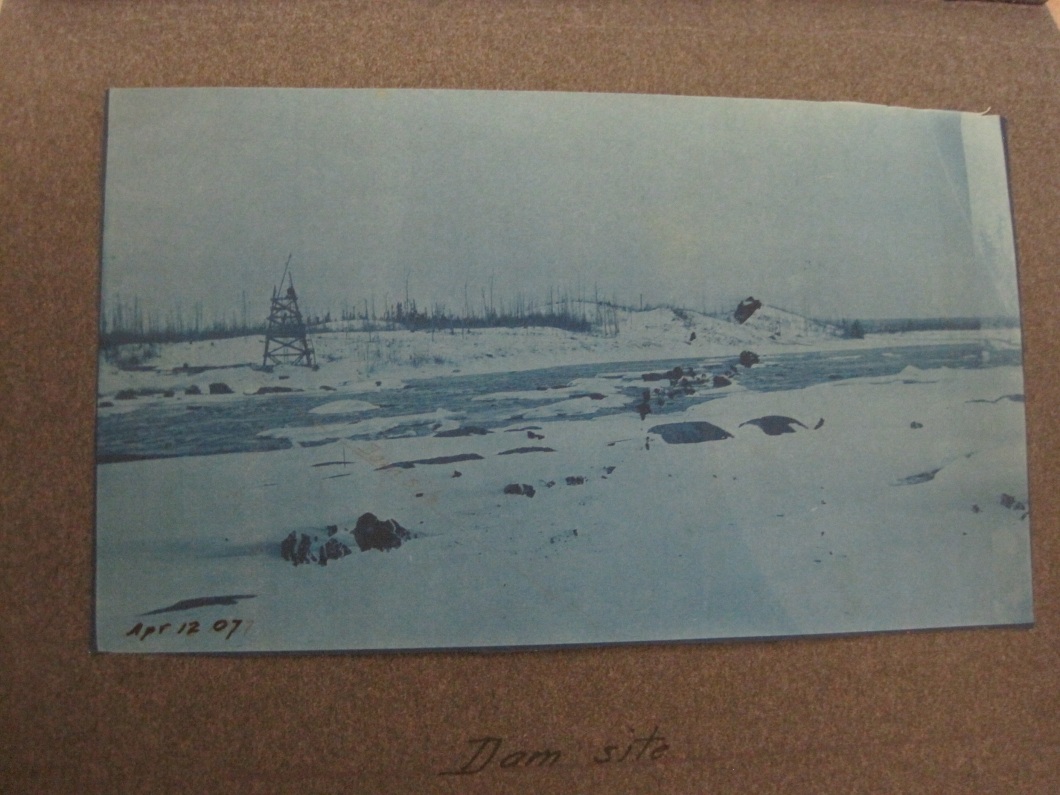
The A.N.D Company was formed in January of 1905 to develop the resources of the Exploits River and Red Indian Lake. Now not much could be done in the winter, it wasn’t easy going on the railway and snow and ice covered the future work site. There was a ready-made staff on the job, at Millertown and they no doubt tied up the loose ends of the lumbering operations there and likely cut saw logs needed for future construction at Grand Falls.
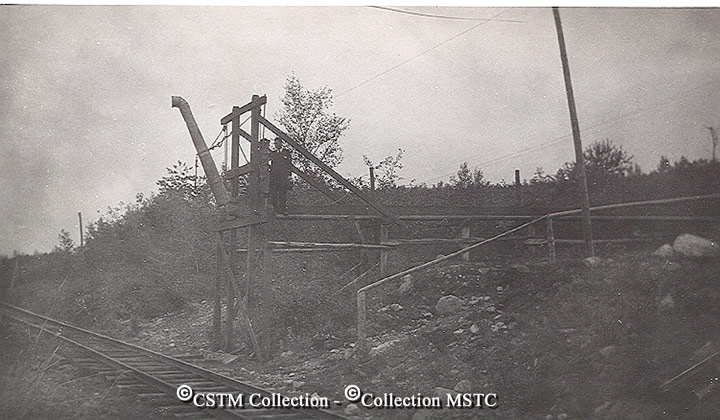
Of of those very first employees most came over from Millertown Including Alex U. Wood, office manager and accountant at Millertown. Wood would oversee management of clearing operations at Grand Falls. Along with Wood, Mr. Hagbert Hanson, a Norwegian and one of the few Scandinavians from Lewis Miller’s operation that stayed on, was another of the first employees of the AND Co. Hanson had been in charge of the supply store for Miller. Another man procured from Millertown was Ben Tulk. Tulk had been a lumberman for Lewis Miller and Timber Estates and became foreman of the clearing operations. After his initial work at Grand Falls Tulk became the first logging contractor to take a pulpwood contract for A.N.D Co in 1908. He was also the Uncle of the Goodyear brothers who with their father would form J. Goodyear and Sons.

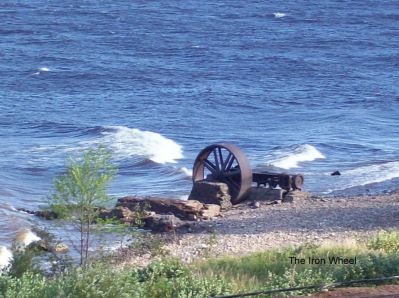
That spring one hundred and ten years ago the first A.N.D employees arrived at Grand Falls dropped off with their supplies and equipment on the rail line some two miles from the Falls, the nearest “station” if one could call it that was at Rushy Pond another few miles up the track. The first workers were there to monitor ice conditions and to take readings of the Exploits to determine its suitability for development. The slept in tents as did the next group of workers who came in June. The second crew was the survey crew and numbered amounts them were reportedly area pioneers Joseph Burke and George Sanders. The survey party was there to stake out the site for the mill and power plant.[i]

The advertisements went out and coupled with word of mouth that the new “Harmsworth Company” needed workers and the men flocked in from all over Newfoundland. Some were familiar with the area having worked with the Lewis Miller Company, The Exploits Lumber Company or on the construction of the Railway in the previous ten years.

Some of the first people and families at Grand Falls were: The above mentioned George Sanders[ii], Joseph Burke, Alex Woods, Hagbert Hanson, plus Tom Brown and family and the Ireland and Gardner Families. They all trekked to the nearest railway station and traveled the narrow gauge to the railway Station and telegraph office two miles from the mill site. From there they walked along a muddy corduroy road that became station road-the first road in the new settlement.
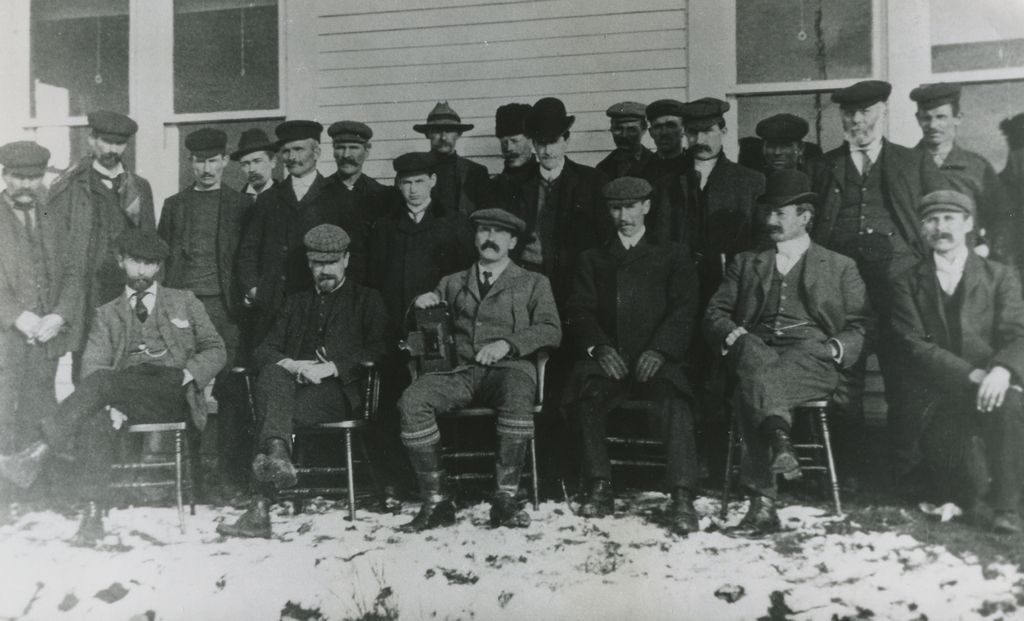
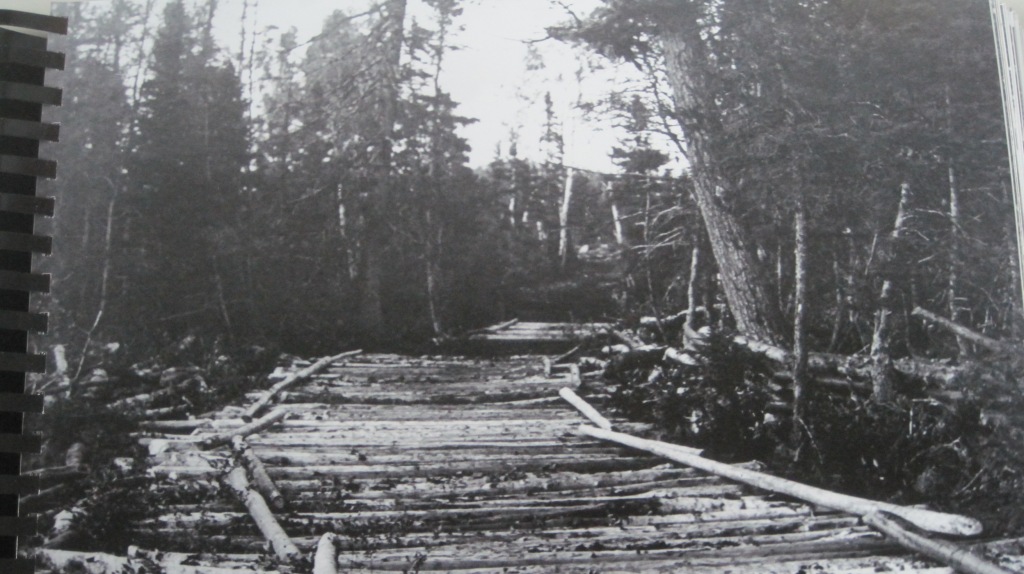
And what a settlement it was. In that first year Grand Falls would have been a collection of tents, tar paper shacks and log cabins. There is some account of bunkhouses being built to accommodate workers, if there was one it was simply a logging camp. Most of the workers did what they had done building the railway they shacked for themselves. They were given some tar paper and a few nails and told to fend for themselves.[iii] There were three shacktowns in the Grand Falls area: the main one in the present area of Riverview Chevrolet, another near high street and another across from the station on the North side of the tracks.

One early structure at the new site was a log cabin belonging to Martin Gardner[iv], which was reportedly located near the middle of present day Polygon Road. This makes sense since that very area would have been located along the preexisting portage road that followed present day Beaumont Avenue.
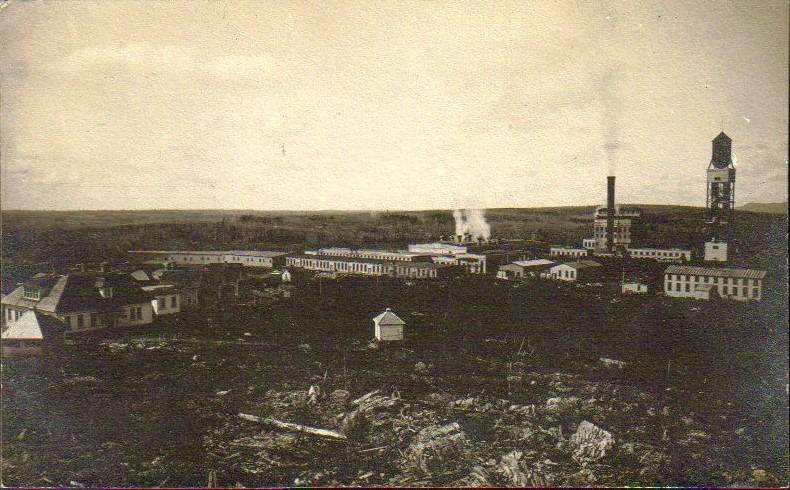
There has been a lot of debate lately over what is the oldest house still standing in Grand Falls-Windsor, it would be surprising if there is a house from 1905 still in existence or if there was even a house erected at the site in the first six months, since even the sawmill machinery shipped up from Millertown did not arrive until fall.[v] The first structures that were not tar paper shacks or made out of logs were likely the following: The AND Company General office-which later became the Daily Mail Library, the first train Station and Telegraph office near the tracks then a couple of the Boarding Houses-the Cabot House and Erin House as well as the A.N.D Company Staff house. The general consensus on the oldest house still standing is that it is most likely on Carmelite Road-which was also where the first school, Grand Falls Academy- attended by both Catholic and protestant children, was built by December of 1905.[vi] This first school building was located on present day Carmelite Road and I have been told its foundations can still be seen in a resident’s back yard.
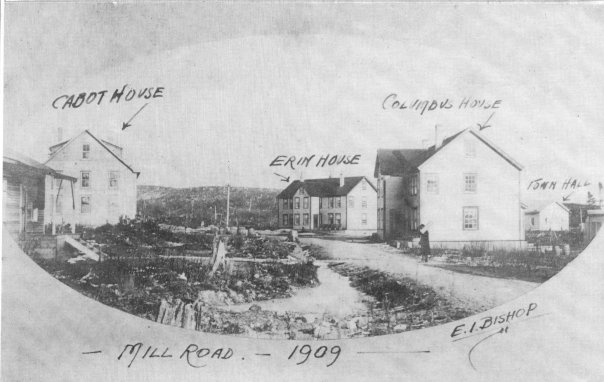

The work in that first year would mainly have consisted of clearing the area for the mill and the town site. Contrary to what many would like to believe Grand Falls was not smack dab in the middle of a virgin forest. In fact most the larger trees had been harvested by the Exploits Lumber Company of Botwood and much of the area had been burned over in 1904. That’s why in old photos much the area looks blackened or burnt- it is because it was. The 1904 fire came on the heels of another one in either 1899 or 1897 that had burned the area.
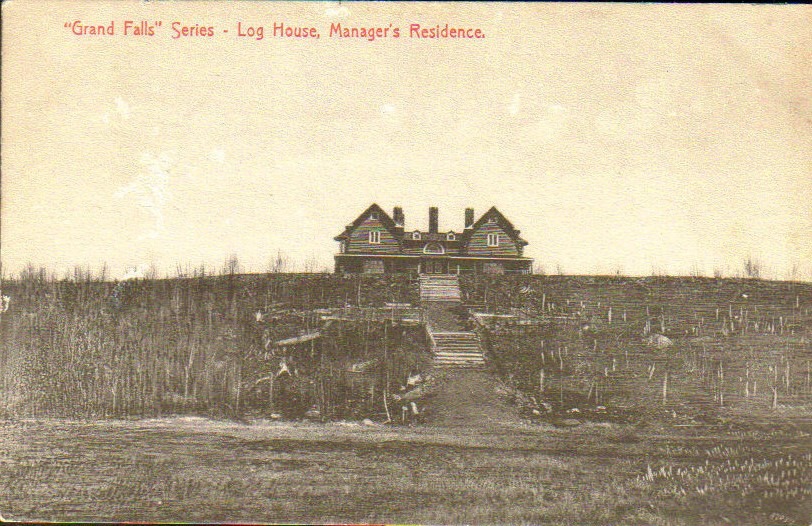
By 1906 things started to take shape at Grand Falls. People had built houses and roads were lain out. As mentioned previously the first road lain out was Station Road, though the first conveyance that could be described as a road predated any development. Folklore says that part of Beaumont Avenue was in fact an old Beothuck portage and it was most definitely used as a portage road by the loggers of the late 19th century, in fact it was known as the old tote or tolt road before it was named Beaumont Avenue, a tote road being another name for a portage road.
After work was started on the town site and generally making the area livable the first big project was the building of the dam. After all the hydro potential of the Grand Falls was the reason that the development was going ahead.
-Bryan Marsh
[i] If have omitted any names please send them along to me and I will make additions.
[ii] Sanders also surveyed Bishop’s Falls for the AE Reed Company in 1907.
[iii] Men working on the railway were known the have lived in tar paper shacks and cooked for themselves. One common staple of those rough and tumble construction days were damper dogs-toutons cooked on a shovel over an open fire. There is little doubt that many of the single men cooking from themselves for the first time availed of this delicacy at Grand Falls.
[iv] Grand Falls-Windsor the Place and It’s People.
[v] Ibid.
[vi] Andopian 1961

MARTIN GARDNER had a log cabin that was located around the area where Wayne Morris has his house, just across the way where there was a stream running according to the stories that were told to me when I was younger
LikeLike
My understanding was from various sources was that Martin Gardener had a cabin on present day Polygon Road and his son had the Cabin near Corduroy Brook and Lincoln Road. Back then the brook was much much better and had a few nice steadies on it near present day Centennial Field. Too bad there are no aerial photos from back then!
LikeLike
Hi, Mr. Marsh,
I’m Elizabeth Saunders-Buckle, Marguerite Saunders’ daughter. I’m also George E. Sanders’ great granddaughter. I remember quite a bit of information from my grandmother Beatrice, George’s daughter. My grandmother wrote an article for the Advertiser on the town’s 75th anniversary and talked about a lot of the early days of the town. My great grandfather was a Dominion Land surveyor and he was hired by the company to help survey the land as you have said. He and his wife Martha, moved to Curling after their wedding. The family did not come to Grand Falls until a house was built for them on Carmelite Road. They arrived in Grand Falls on Feb. 10, 1910 and rode to Carmelite Rd. on a horse and buggy because there was very little snow that particular year. Of course my great grandfather was in Grand Falls years before the family moved there. From letters, I believe he started work in 1902 for the company. Also, my understanding of the oldest houses in town are the homes on Circular Rd. and the streets downtown. I hope this information maybe of some use.
LikeLike
I knew your mother, Mom worked with her for years. The carpenters actually wrote their names on the inside of one of the walls in that house. You wouldn’t remember the names in those letters? The AND Co didn’t exist until January of 1905 but the Harmsworths would have been in contact with people in Newfoundland by 1903. In all likelihood George Sanders would have done work for the Reid Railway and Newfoundland Timber Estates as well.
LikeLike
I would like permission to use your photo of the corduroy road on this post. I write a blog at JourneytothePastblog.com and would like to write a post about a recent road under construction that unearthed a corduroy road. I would like to show a historic picture of one. If you could contact me at brae957atgmaildotcom I would appreciate it. I would give you full credit. Thank you in advance for consideration of my request.
LikeLike
Don’t worry about it, the photo is old enough that copyright does not apply, it is not mine either.
LikeLike